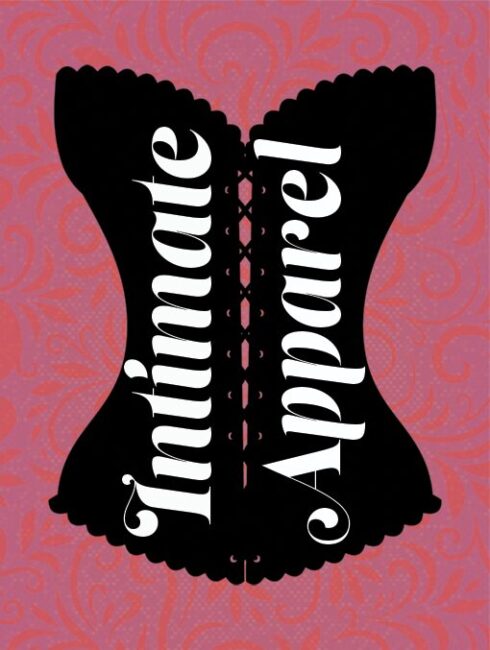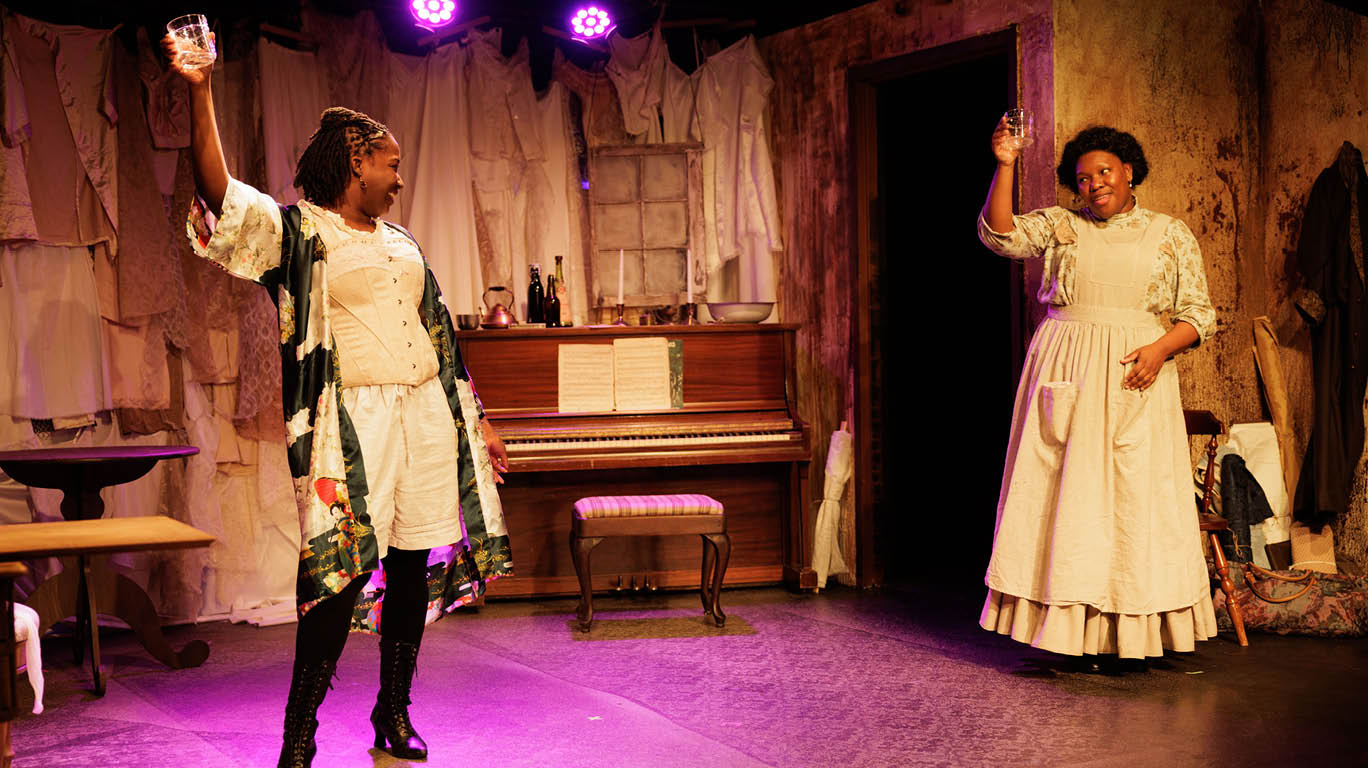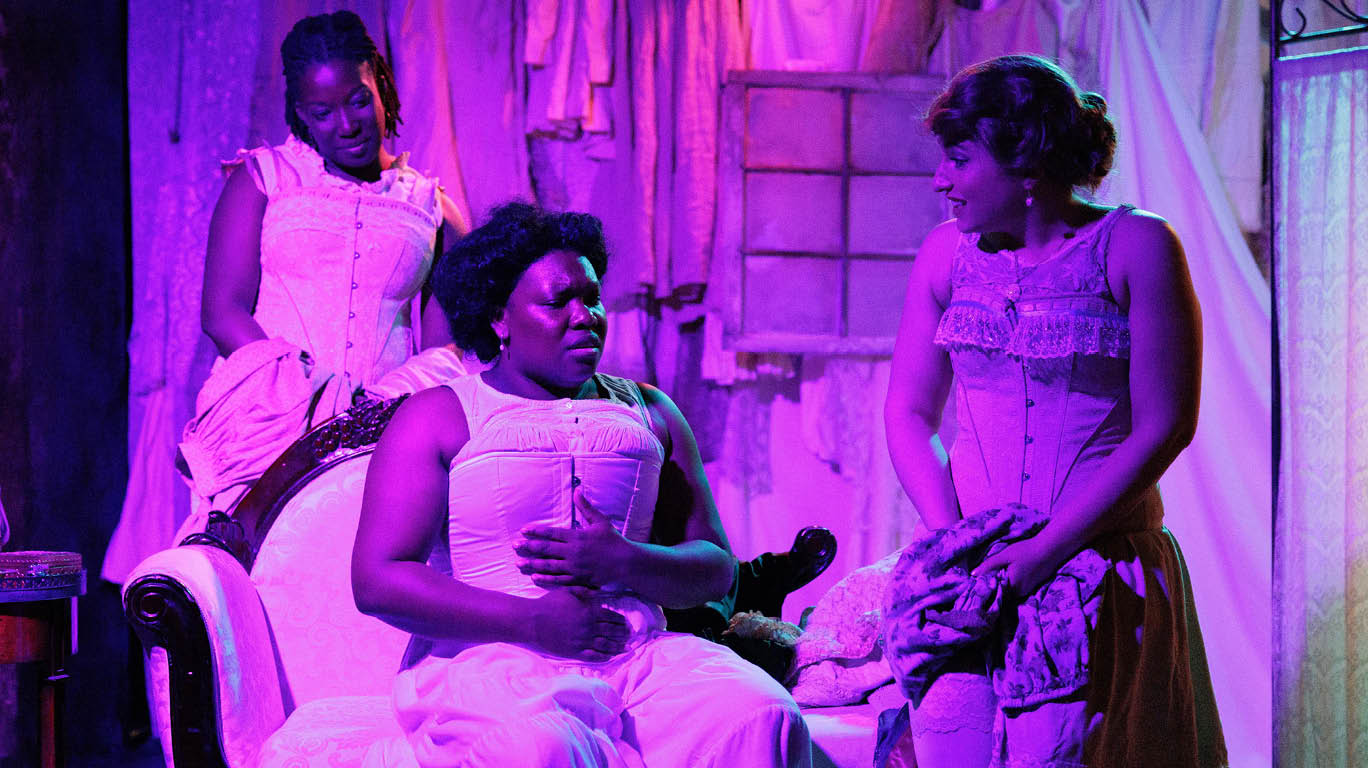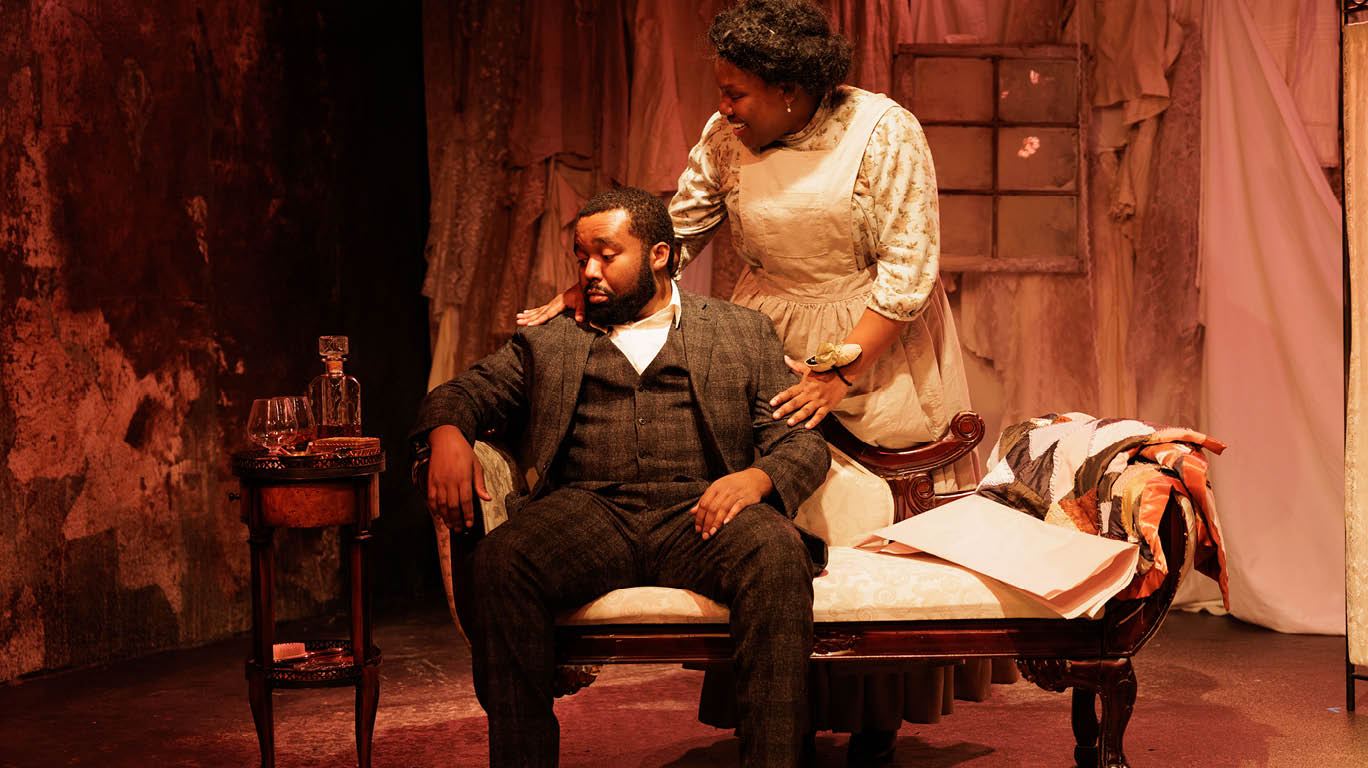Lynn Nottage’s Intimate Apparel has local origins; originally a co-production between Baltimore’s Center Stage and California’s South Coast Repertory in 2003, it went on to a 3-month Off-Broadway run starring Viola Davis. The material also has a direct link to Nottage’s family history and was inspired by her great-grandmother’s life as a seamstress in the early 1900’s. Nottage found that the narrative and stories of black women in the early 1900’s were largely absent by researching her great-grandmother’s life. She has a flair for penning raw, emotional, and poignant slice-of-life stories, and Intimate Apparel is a perfect example of this. Skillfully directed by Sierra Young, Maryland Ensemble Theatre (MET) puts up an outstanding production that reflects every ounce of the sense of loss and hope Nottage puts into this script.

Set in early 1900’s New York, Intimate Apparel centers around the life of Esther, a black seamstress who has made a living from sewing intimate apparel (hence the name of the show) for a range of clients—rich white women to poor prostitutes—over 18 years. During this time, she saves all the extra money she has sewed into a quilt in her room at the boarding house she shares with other women who come and go, hoping one day to open a beauty parlor for black women—noting that black women need some time to feel pretty too; just like the rich white women she sews for. Esther is introduced to a Caribbean man who is laboring on the Panama Canal, and the first act focuses on her relationship to those in her life and her ongoing written correspondence to this mystery man. Illiterate, Esther relies on her friendship with a rich white woman whom she sews for to help her write back to her mysterious love. In the second act of the show, we meet this mystery man, and witness the tragedy of loss and hope that ensues.
Production-wise, MET does a spectacular job bringing Nottage’s vision to life. MET’s stage is very small, and is perfect for shows like Intimate Apparel, where it is so important to feel a sense of intimacy with the performers on stage. Director Sierra Young uses every ounce of the stage with thoughtful and effective blocking, with a hyper-focus on Nottage’s storytelling. Young focuses heavily on letting the characters shine through their own pacing and isn’t afraid of pausing to let the emotion of the scene take place naturally, welcoming the audience into the scene like they are watching something happen in real time as opposed to a performance. With that said, there are times where the pacing did need to keep moving at a tighter clip, but overall, the natural pacing of the show is good.
Set Designer Sarah Phillips creates a potent stage, with a backdrop of nothing but “intimate apparel.” The entire rear wall of the set is covered in early 1900’s-style women’s undergarments; reflective of exactly what you might see in Esther’s sewing room, with a central pillar half-covered in old, peeling wallpaper. While this might seem almost heavy-handed at first, it very much pulls the audience into Esther’s life. Esther’s sewing machine splits the stage in front of the central pillar, with each side of the stage creating different scenes. Young uses the set design to fluidly change between scenes in a perfectly believable fashion.

While the performers need to be applauded for their dedication to the various accents and dialects of their characters, Dialect Coach Eric Jones deserves a shout-out. The dialects in this performance are spot-on, ranging from Caribbean, upper-crust rich, white, southern aristocrat, to Jewish, to poor, black southerner. For a script containing only 6 characters, the dialects and history of the characters is far-reaching, and the accents/dialects were perfectly executed. Tom Majarov, Projection and Sound Designer, also deserves recognition for the very well-balanced music and sound effects that pervade the scenes, including a little bit of actual singing. The projections, which appear only a couple of times throughout the show, provide a striking reminder of the slice of life we are witnessing. Costume Designer Karsen Green creates a resplendent and perfectly accurate wardrobe for each of the varied histories of these characters, and also deserves praise for her work. Lighting Designer Stephen Knapp uses the impressive light plot for this small space to its full capability. Aside from the split-stage, creating individual spaces for a particular scene is critical, and this is executed perfectly for moments like George Armstrong’s (our mysterious Caribbean romancer) asides when he is reading his letters aloud to the audience, and uses individual schemes for the rooms depicted on the shared stage-left space. Knapp impressively balances the mood of piece with the lighting and uses color in an understated way that lends to the performance and never pulls focus.
There are only 6 characters in Nottage’s script, and director Sierra Young casts a perfect ensemble. There is not a weak link on stage; they understood the assignment and the characters. Each performer does exactly what they need to do here to bring Nottage’s script to life in the best way possible. It should be noted that we saw the full original cast, and that there are three understudies, Joseph Baltz (Mr. Marks U/S), Jennifer Pagano (Mrs. Van Buren u/s) and Nadia Palacios (Female Swing) who we did not see perform. Hats off to MET for casting swings and understudies, which is such an integral piece of keeping theatre alive in this post-COVID era.
Eleanore Tapscott as Mrs. Dickson, who runs the rooming house where Esther lives and sews, brings a boisterous, matronly, and maternal energy to the stage in her relationship with Esther. She makes it clear from the start how much she cares about Esther, even when she is forcing her motherly advice and opinions on her. She brings a sense of hope and love to the stage. Zipporah Brown as Mayme, Esther’s prostitute friend, is a force. Mayme makes a living playing the piano and offering herself up to those who pay. Brown brings both sides of Mayme’s character to life—the exhaustion and demeaning nature of what she does, and the bright, outspoken optimism that offsets Esther’s personality. She is both sad and rowdy, and seemingly at peace with her lot in life. Her scenes are a joy to watch, and the live song she sings with Esther is a highlight.

Tori Weaver skillfully portrays Mrs. Van Buren, a rich, white woman, who regularly purchases from Esther. This character is written well; it’d be easy to write this character as a stark trope to reflect the oppressive nature of the rich white aristocrats in this era, but Mrs. Van Buren shares a strong connection and love with Esther, helping her to read her correspondence and write back to George Armstrong. Weaver has a strong, deliberate, and unfaltering stage presence that exudes both the overconfidence of Van Buren’s privilege and her soft and caring nature. Her southern accent and whims are perfect. Unhappy in her marriage, Weaver’s blossoming friendship with Esther is very palpable. Weaver is a talented and giving actor, and always clearly listening to those she performs with.
Evan Carrington as George Hoffman, the mystery Caribbean man laboring in the Panama Canal, does an outstanding job in this role, considering it’s necessary to play almost two completely different characters. In the first act of the show, he is portrayed only by his missive with Esther as asides: a lonely, loving, earnest common man who longs for love. Carrington makes you feel for Hoffman’s plight, and you want to see him get the love he deserves. In the second act of the show, the audience sees a different side of George, and without spoiling the nature of this, he does it deftly. His Caribbean accent is on point for most of the show, although there were a few times we had difficulty understanding some of the verbiage. Nonetheless, Carrington’s portrayal of a lovelorn laborer and his flipside is impressive, and carries the audience to feel exactly how they should feel about George.
Joseph Waeyaert as Mr. Marks was simply a joy to watch. Mr. Marks is an orthodox Jewish man who sells Esther her fabric. The audience witnesses Esther and Marks’ relationship develop from buyer/seller to something more understanding, friendly, and maybe even a hint of something more emotional in the end, but maybe not. Waeyaert brings an incredible level of understatement and genuine kindness to Mr. Marks that is rare to see on stage. His accent is flawless. You just want to give him a hug and be his friend. There are times where his volume/projection dips slightly too low to be heard clearly, but it never detracts from the performance. Waeyaert is a true highlight of this show, and a gifted actor. We loved every moment he was on stage.

Kecia Deroly deserves true accolades in her performance as Esther. She hits all of the right notes in Esther’s hopeful and joyous nature, to the sad resignation of her lot in life, her anger, lack of self-confidence in love, willfulness to do the right thing, to learn, and her understated “every-woman” personality that Nottage intended. Every bit of Esther that Deroly put out was 100% natural and heartfelt. Esther is a living, breathing representation of the longing for more, earnest desire to love and be loved, and the empty anonymity that America gave to black women of the early 1900’s. Deroly was a delight to behold on stage, and we have no doubt Lynn Nottage would watch her performance and say “This is Esther’s story, exactly as I intended.”
This is a slice-of-life story that is worth everyone’s time to watch, and MET’s ensemble of hard-working cast and crew deserves you in their seats to witness it.
Running Time: Approximately 2 hours and 10 minutes with one intermission
Intimate Apparel plays March 10th 2024 on the Main Stage of the Maryland Ensemble Theatre in the Historic FSK Hotel building— 31 W. Patrick street in downtown historic Frederick, MD. For tickets call the box office at (301) 694-4744 or purchase them online.
Friday & Saturday performances begin at 8pm. Sunday matinees begin at 3pm.
